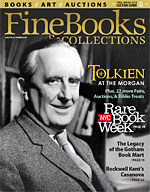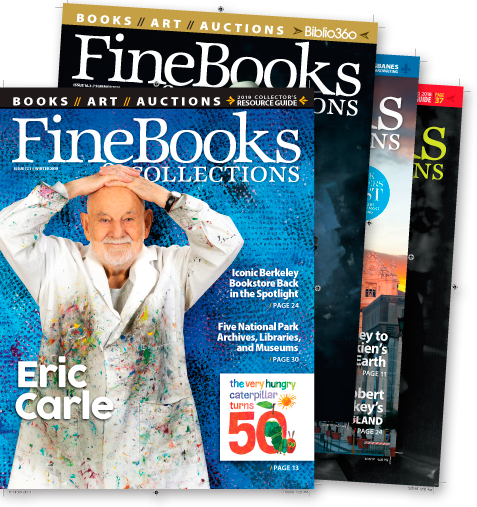Collecting the Revolution
“It’s interesting to find out what the British thought,” said Gibson, who used to make regular trips to England to buy books. “You can see how they justified what they did or didn’t do, and The Annual Register is pretty straightforward in reporting the news.”
It is this type of reportage, or contemporary narrative, that brings me back to something Ken Gloss told me in Boston.
“There will always be a strong interest in the formation of the country,” he said. “People want to know about the war, change and upheaval that occurred but tend to look at our history through rose-colored glasses. They don’t remember about the hardships the founders of the country faced.”
My mind returns to Joseph Plumb Martin as one of the many tortured faces of the Revolution.
“Here I endured hardships sufficient to kill a half dozen horses,” he writes of an effort to seize a British-held fort in New Jersey called Billingsport. “Let the reader only consider for a moment and he will be satisfied if not sickened. In the cold month of November, without provisions, without clothing, not a scrap of either shoes or stockings to my feet or legs, and in this condition to endure a siege in such a place as that was appalling to the highest degree.”
I sit here now in my study clicking away at the keyboard in the comfort of my climate-controlled home. Months after my last trip to Valley Forge, I still cannot imagine the adversity he faced. I can’t do much for him now, but I can honor him and those like him in my patriotic collection.
If you’re considering building a collection on the Revolution, the first two questions to consider are what topics within the field intrigue you the most and what types of material you would most like to collect.
A speed reading of potential answers for both includes but certainly isn’t limited to:
- Subjects: general histories, battle histories, biographies, religious examinations, intellectual underpinnings, the American view—or those of the British, French, Germans or others—autobiographies of commanders, narratives of Army grunts, the role of Native Americans on both sides and the role newspapers played.
- Materials: rare books (contemporary), modern books, original manuscripts, broadsides, magazines, newspapers, pamphlets, almanacs and maps.
You could expand these lists tenfold by cracking open a good bibliography such as Revolutionary America 1763-1789 published by the Library of Congress in 1984. I found a pair at auction for $22.
Historian John Ferling on the Revolution
Historian John Ferling admitted he is not prone to the emotional frenzy I encounter on the trail of independence, but he very much enjoys the intellectual engagement—especially the chance to gain greater insight by using original documents.
“I’ve never been one to be swept off my feet because I’m holding a paper that a founder held but it is very interesting to see original papers,” said the author of books including Almost a Miracle: The American Victory in the War of Independence. “I used a lot of original papers related to Benedict Arnold and his expedition to Canada. I was able to dig down and see things no one else sees.”
I first met Ferling when he gave a speech in Washington D.C. Attending book signings with modern authors is a great way for me to add signed copies to my collection while also getting leads on rare books and materials referenced or used in the authors’ books. The history professor emeritus at the University of West Georgia told me he understands why people still flock to the subject.
“In America, you can see the formation of the country more clearly than you can the start of countries like France or England,” he said. “It takes place within a single founding generation so you can really sink your hooks into it. People want to know what kind of country the founders expected and how has it worked out.”
I was much relieved when he answered the question he raised, affirming that all my collecting and study have led me to well-founded conclusions.
“Politics today really haven’t changed that much from the 1790s,” he said. “You have people on one side that want a large government that can do things for the masses and on the other that’s very fearful of government and wants to keep it small. Our politics have been a variation on that theme for more than two hundred years.”







